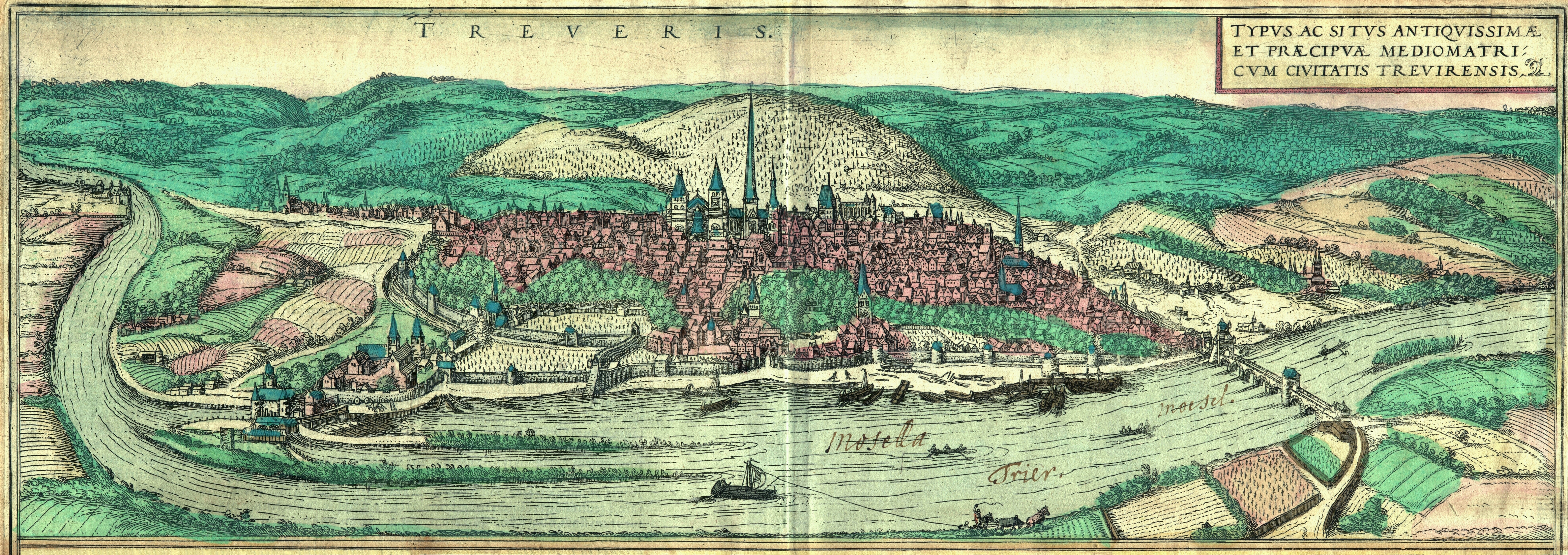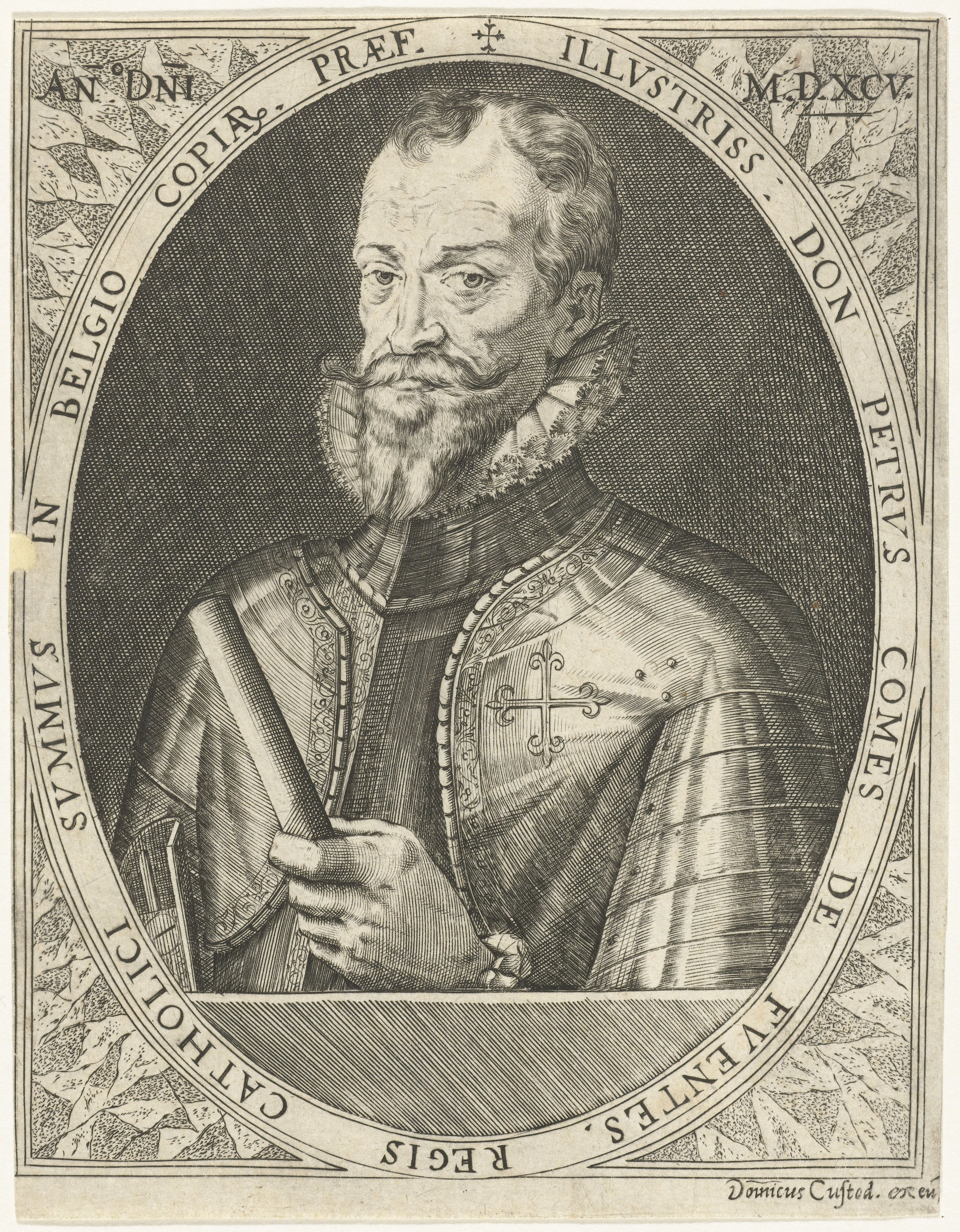|
Siege Of Huy (1595)
The siege of Huy of 1595, also known as the assault of Huy, took place between 7 and 20 March 1595, at Huy, Archbishopric of Liège, Low Countries, as part of the Eighty Years' War and the Anglo-Spanish War (1585–1604). It concluded in a Spanish victory. Capture Despite the promises of Prince Maurice of Orange to relieve Huy, the forces of the new Governor-General of the Spanish Netherlands, Don Pedro Henríquez de Acevedo, Count of Fuentes ''( Spanish: Conde de Fuentes)'', led by Don Valentín Pardieu de la Motte, after a short siege and low resistance, captured the town and the citadel from the combined Protestant troops of Charles de Héraugière. Thirteen days later, on March 20, Héraugière, unable to keep the defense, agreed to terms of capitulation between the Protestant forces and the Spaniards.Nuyens p.177 The Spanish forces were composed of two Spanish tercios led by Don Luis de Velasco and Don Antonio de Zúñiga, two German regiments, three Walloon re ... [...More Info...] [...Related Items...] OR: [Wikipedia] [Google] [Baidu] |
Frans Hogenberg
Frans Hogenberg (1535–1590) was a Flemish and German painter, engraver, and mapmaker. Hogenberg was born in Mechelen in Flanders as the son of Nicolaas Hogenberg.Frans Hogenberg in the In 1568 he was banned from by the because he was a protestant and had printed engravings sympathizing with the .< ... [...More Info...] [...Related Items...] OR: [Wikipedia] [Google] [Baidu] |
Pedro Henriquez De Acevedo, Count Of Fuentes
Pedro Henriquez d'Azevedo y Alvarez de Toledo, Count of Fuentes de Valdepero (1525 in Zamora, Spain – 22 July 1610 in Milan, Italy) was a Spanish general and statesman. Biography Born at Zamora, he was a page at the court of Philip II of Spain, training in Naples in 1557, aged 32 with Fernando Alvarez de Toledo, 3rd Duke of Alba, (1507–1582), Governor of the Duchy of Milan, 1555–1556, Viceroy of Naples, 1556–1557, Governor of the Habsburg Netherlands, Viceroy of Portugal, 1582–1584, He took part in the 1580 campaign in Portugal under the Duke of Alba and in 1582 was given supreme command over the Spanish troops. In 1589, as Captain General of Portugal, he successfully defended Lisbon against the attack by the English Armada, led by John Norreys and Francis Drake. Sent in 1591 by the king to the Netherlands, he assisted after the death of Alexander Farnese, Duke of Parma, his successor Peter Ernst von Mansfeld and later Ernst of Austria, after whose death he became ... [...More Info...] [...Related Items...] OR: [Wikipedia] [Google] [Baidu] |
Citadel Of Huy
The Fort of Huy (french: Fort de Huy) or the Citadel of Huy (french: Citadelle de Huy), known locally as The Castle ( wa, Li Tchestia), is a fortress located in the Wallonia, Walloon city of Huy in the Liège (province), province of Liège, Belgium. The fort occupies a high position in the town, overlooking the strategic Meuse river. The site of the citadel has been fortified since the ninth century, and various structures have been built on the site. The current fort dates to in 1818 during United Kingdom of the Netherlands, the period of Dutch rule in Belgium and took five years to build. The Citadel was frequently used to house political prisoners. In the 19th century, members of the revolutionary Belgian Legion were imprisoned after their failed invasion of Belgium at Risquons-Tout in 1848. During the German occupation of Belgium during World War II, German occupation of Belgium in World War II, six thousand Belgian political prisoners, including the Communist Julien Lahaut, w ... [...More Info...] [...Related Items...] OR: [Wikipedia] [Google] [Baidu] |
Scottish People
The Scots ( sco, Scots Fowk; gd, Albannaich) are an ethnic group and nation native to Scotland. Historically, they emerged in the early Middle Ages from an amalgamation of two Celtic-speaking peoples, the Picts and Gaels, who founded the Kingdom of Scotland (or ''Alba'') in the 9th century. In the following two centuries, the Celtic-speaking Cumbrians of Strathclyde and the Germanic-speaking Angles of north Northumbria became part of Scotland. In the High Middle Ages, during the 12th-century Davidian Revolution, small numbers of Norman nobles migrated to the Lowlands. In the 13th century, the Norse-Gaels of the Western Isles became part of Scotland, followed by the Norse of the Northern Isles in the 15th century. In modern usage, "Scottish people" or "Scots" refers to anyone whose linguistic, cultural, family ancestral or genetic origins are from Scotland. The Latin word ''Scoti'' originally referred to the Gaels, but came to describe all inhabitants of Scotland. Cons ... [...More Info...] [...Related Items...] OR: [Wikipedia] [Google] [Baidu] |
Cavalry
Historically, cavalry (from the French word ''cavalerie'', itself derived from "cheval" meaning "horse") are soldiers or warriors who fight mounted on horseback. Cavalry were the most mobile of the combat arms, operating as light cavalry in the roles of reconnaissance, screening, and skirmishing in many armies, or as heavy cavalry for decisive shock attacks in other armies. An individual soldier in the cavalry is known by a number of designations depending on era and tactics, such as cavalryman, horseman, trooper, cataphract, knight, hussar, uhlan, mamluk, cuirassier, lancer, dragoon, or horse archer. The designation of ''cavalry'' was not usually given to any military forces that used other animals for mounts, such as camels or elephants. Infantry who moved on horseback, but dismounted to fight on foot, were known in the early 17th to the early 18th century as '' dragoons'', a class of mounted infantry which in most armies later evolved into standard cavalry while ... [...More Info...] [...Related Items...] OR: [Wikipedia] [Google] [Baidu] |
Infantry
Infantry is a military specialization which engages in ground combat on foot. Infantry generally consists of light infantry, mountain infantry, motorized infantry & mechanized infantry, airborne infantry, air assault infantry, and marine infantry. Although disused in modern times, heavy infantry also commonly made up the bulk of many historic armies. Infantry, cavalry, and artillery have traditionally made up the core of the combat arms professions of various armies, with the infantry almost always comprising the largest portion of these forces. Etymology and terminology In English, use of the term ''infantry'' began about the 1570s, describing soldiers who march and fight on foot. The word derives from Middle French ''infanterie'', from older Italian (also Spanish) ''infanteria'' (foot soldiers too inexperienced for cavalry), from Latin '' īnfāns'' (without speech, newborn, foolish), from which English also gets '' infant''. The individual-soldier term ''infantry ... [...More Info...] [...Related Items...] OR: [Wikipedia] [Google] [Baidu] |
Dutch People
The Dutch (Dutch: ) are an ethnic group and nation native to the Netherlands. They share a common history and culture and speak the Dutch language. Dutch people and their descendants are found in migrant communities worldwide, notably in Aruba, Suriname, Guyana, Curaçao, Argentina, Brazil, Canada,Based on Statistics Canada, Canada 2001 Censusbr>Linkto Canadian statistics. Australia, South Africa, New Zealand and the United States.According tFactfinder.census.gov The Low Countries were situated around the border of France and the Holy Roman Empire, forming a part of their respective peripheries and the various territories of which they consisted had become virtually autonomous by the 13th century. Under the Habsburgs, the Netherlands were organised into a single administrative unit, and in the 16th and 17th centuries the Northern Netherlands gained independence from Spain as the Dutch Republic. The high degree of urbanization characteristic of Dutch society was attained at a ... [...More Info...] [...Related Items...] OR: [Wikipedia] [Google] [Baidu] |
Walloon Flanders
Walloon Flanders (Dutch: ''Waals Vlaanderen'', French: ''Flandre wallonne'') was a semi-independent part of the County of Flanders, composed of the Burgrave, burgraviates of Lille, Douai and Orchies. It is sometimes referred to as ''Lille–Douai–Orchies.'' The population of the region speak Walloon and Picardy dialects. History The term "Walloon Flanders" appeared after the French conquest and was fixed in the literature by the beginning of the 19th century. Walloon Flanders was part of the County of Flanders from the early Middle Ages, but was ceded to the Kingdom of France from 1304 to 1369, by the Treaty of Athis-sur-Orge which concluded the Franco-Flemish War (1297-1305). As a result, it was to some degree institutionally distinct from the County of Flanders and in some lists it even features as one of the Seventeen Provinces. Furthermore, Walloon Flanders adhered to the Union of Arras in 1579, whereas the County of Flanders joined the Union of Utrecht. In 1678, Walloon ... [...More Info...] [...Related Items...] OR: [Wikipedia] [Google] [Baidu] |
Lower Germany
Germania Inferior ("Lower Germania") was a Roman province from AD 85 until the province was renamed Germania Secunda in the fourth century, on the west bank of the Rhine bordering the North Sea. The capital of the province was Colonia Agrippinensis (modern-day Cologne). Geography According to Ptolemy (2.9), Germania Inferior included the Rhine from its mouth up to the mouth of the ''Obringa'', a river identified with either the Aar or the Moselle. The territory included modern-day Luxembourg, the southern Netherlands, part of Belgium, and part of North Rhine-Westphalia in Germany, west of the Rhine. The principal settlements of the province were Castra Vetera and Colonia Ulpia Traiana (both near Xanten), Coriovallum ( Heerlen), Albaniana (Alphen aan den Rijn), Lugdunum Batavorum ( Katwijk), Forum Hadriani ( Voorburg), Ulpia Noviomagus Batavorum (Nijmegen), Traiectum (Utrecht), Atuatuca Tungrorum ( Tongeren), Bona ( Bonn), and Colonia Agrippinensis ( Cologne), the ... [...More Info...] [...Related Items...] OR: [Wikipedia] [Google] [Baidu] |
Antonio De Zúñiga Y Zúñiga
Antonio is a masculine given name of Etruscan language, Etruscan origin deriving from the root name Antonius. It is a common name among Romance language-speaking populations as well as the Balkans and Lusophone Africa. It has been among the top 400 most popular male baby names in the United States since the late 19th century and has been among the top 200 since the mid 20th century. In the English language it is translated as Anthony (given name), Anthony, and has some female derivatives: Antonia, Antónia, Antonieta, Antonietta, and Antonella'. It also has some male derivatives, such as Anthonio, Antón, Antò, Antonis, Antoñito (name), Antoñito, Antonino (name), Antonino, Antonello (name), Antonello, Tonio (name), Tonio, Tono (other), Tono, Toño, Toñín, Tonino (other), Tonino, Nantonio, Ninni, Toto (other), Totò, Tó, Tonini, Tony, Toni, Toninho, Toñito (name), Toñito, and Tõnis. The Portuguese equivalent is António (Portuguese orthography) or ... [...More Info...] [...Related Items...] OR: [Wikipedia] [Google] [Baidu] |
Luis De Velasco Y Velasco, 2nd Count Of Salazar
Luis de Velasco y Velasco, 2nd Count of Salazar, 1st Marquess of Belvedere, (Valladolid, Spain, 1559 – Dunkirk Dunkirk (french: Dunkerque ; vls, label=French Flemish, Duunkerke; nl, Duinkerke(n) ; , ;) is a commune in the department of Nord in northern France. [...More Info...] [...Related Items...] OR: [Wikipedia] [Google] [Baidu] |
Tercio
A ''tercio'' (; Spanish for " third") was a military unit of the Spanish Army during the reign of the Spanish Habsburgs in the early modern period. The tercios were renowned for the effectiveness of their battlefield formations, forming the elite military units of the Spanish Monarchy. They were the essential pieces of the powerful land forces of the Spanish Empire, sometimes also fighting with the navy. The Spanish tercios were a crucial step in the formation of modern European armies, understood as made up of professional volunteers, instead of levies raised for a campaign or hired mercenaries typically used in other European countries of the time. The tercios' internal administrative organization, and their battlefield formations and tactics, grew out of the innovations of Gonzalo Fernández de Córdoba during the conquest of Granada and the Italian Wars in the 1490s and 1500s. The tercios marked a rebirth of battlefield infantry comparable to the Macedonian phalanxes and ... [...More Info...] [...Related Items...] OR: [Wikipedia] [Google] [Baidu] |







